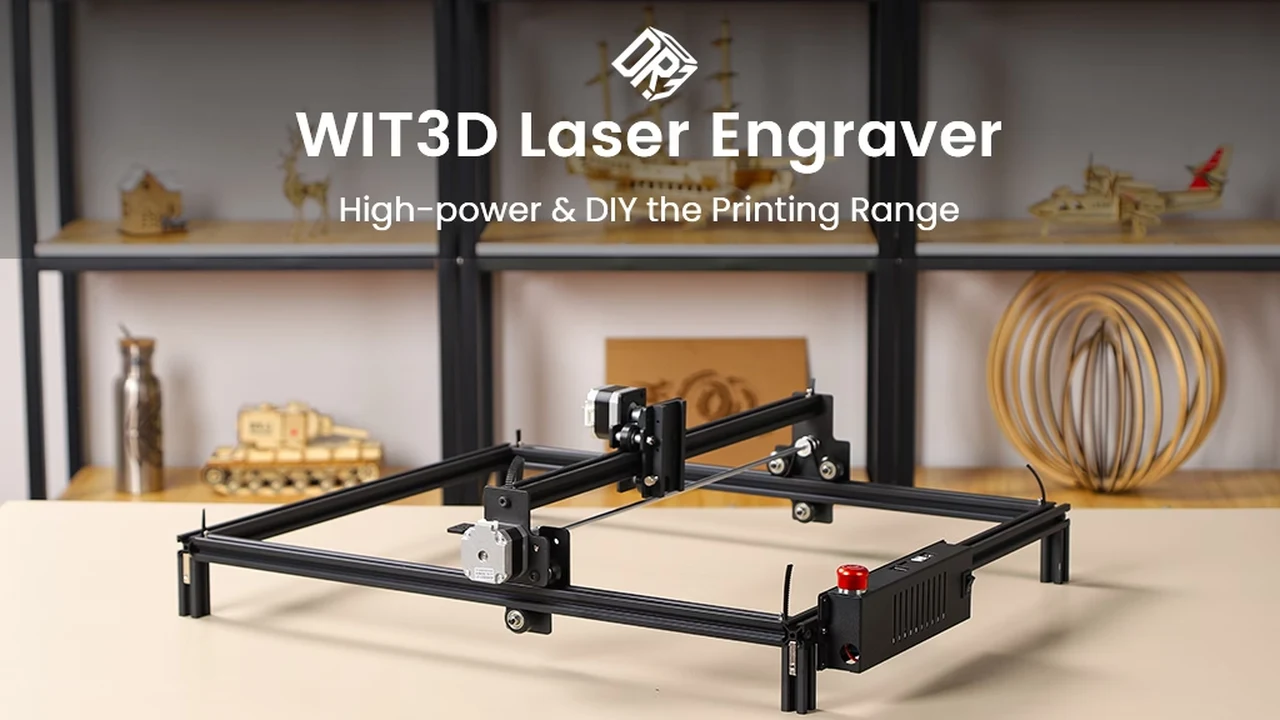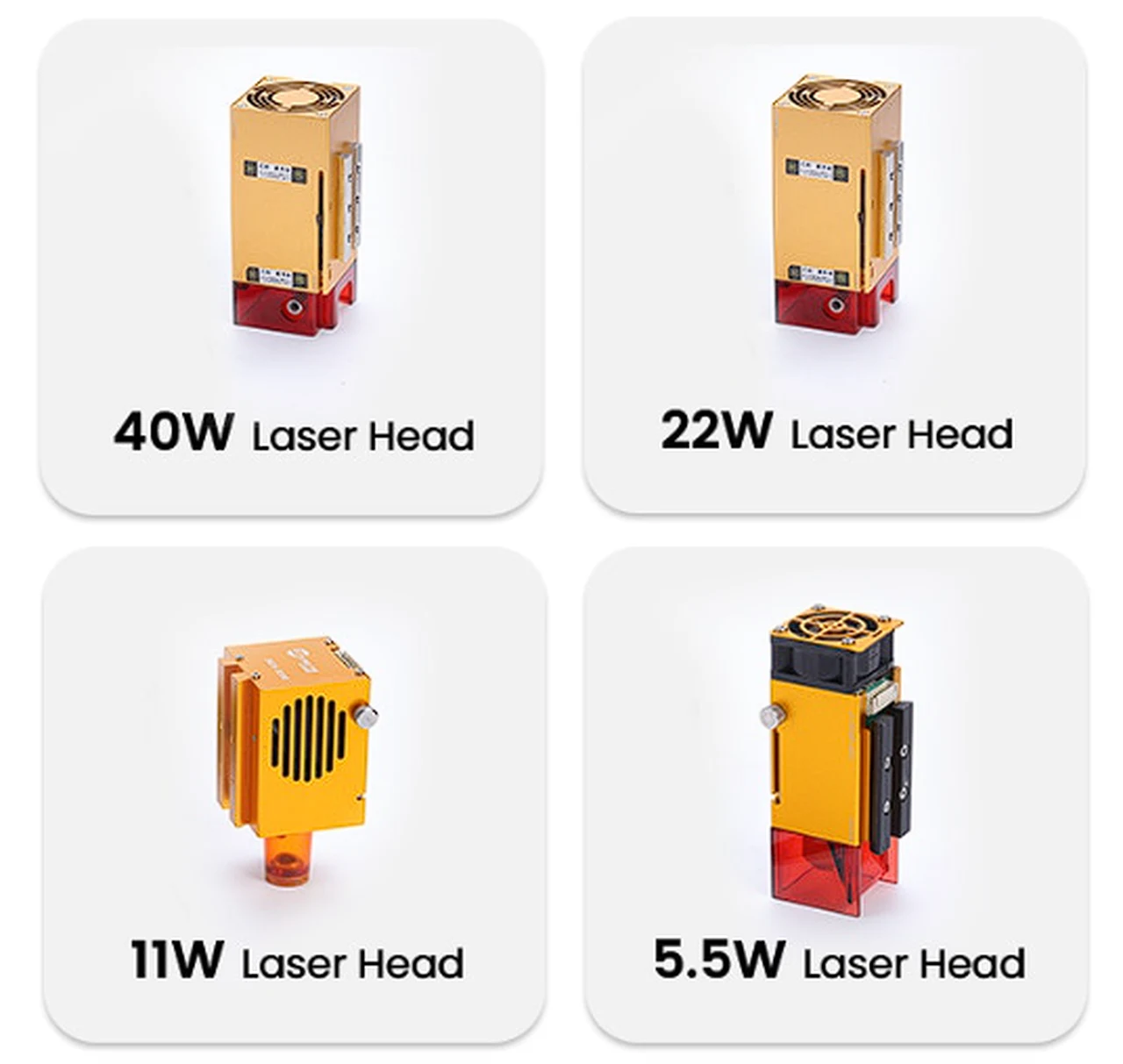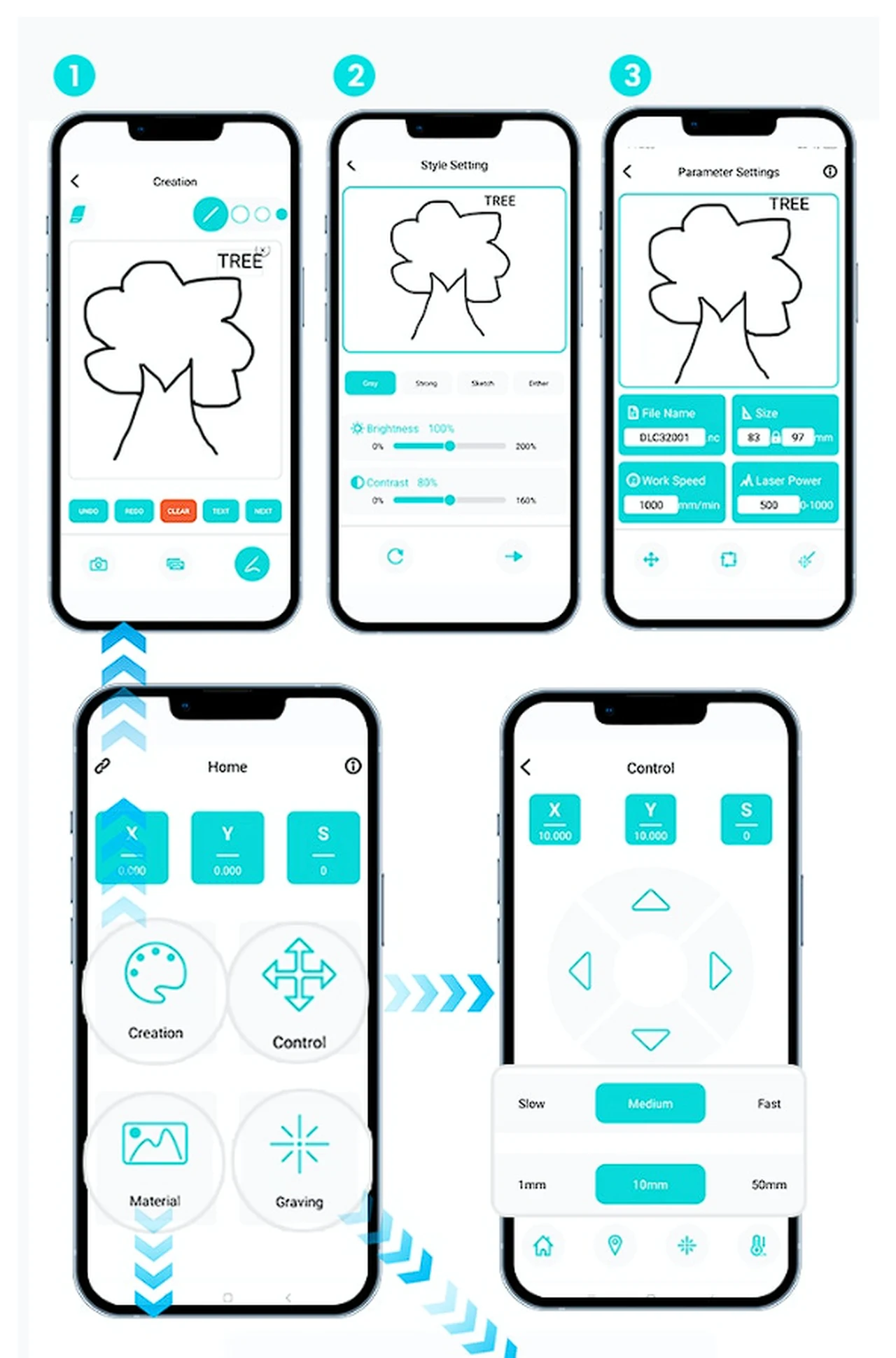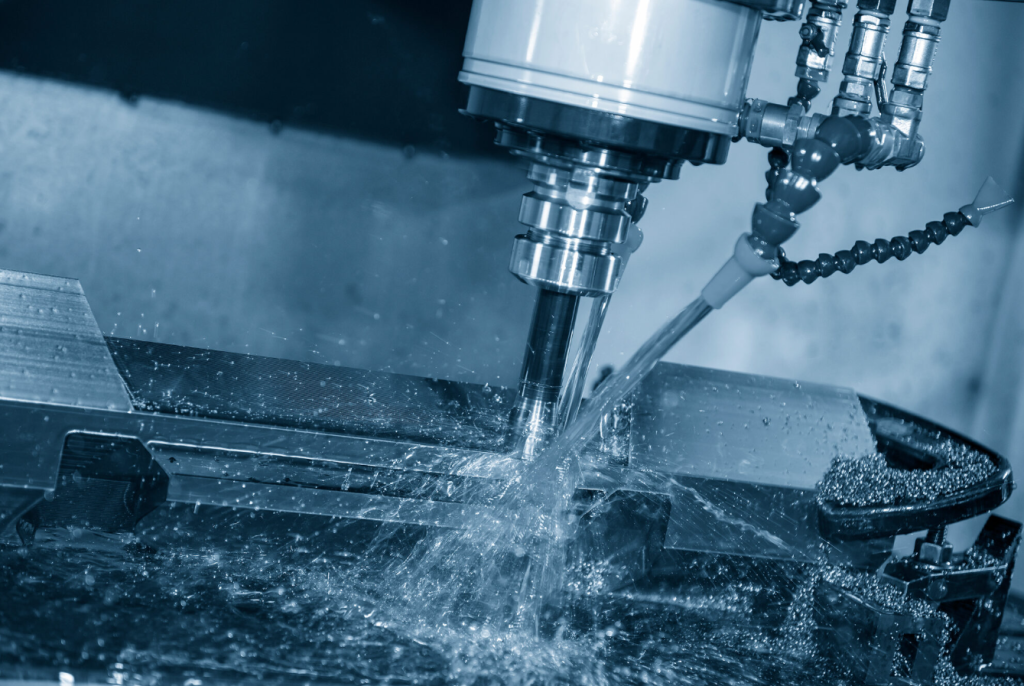
The WIT3D Japanese CNC desktop laser engraver has been specifically designed to provide users, creators, makers, crafters and enthusiasts with a combination of accuracy, speed, and flexibility that can elevate your projects to new heights. Whether you’re a hobbyist looking to add a personal touch to your creations or a professional seeking a reliable engraving solution, this machine could be your perfect partner.
With its generous engraving area of 5200cm², which translates to a workspace of 400mm x 400mm, That can be expanded even further for those larger projects if needed, up to 1300mm x 400mm. Giving you the room you need to work without constraints. The machine’s design is focused on efficiency, allowing for quick assembly and disassembly in about 3 minutes, so you can dive into your work with minimal setup time.

Early bird packages are now available for the disruptive project from roughly $169 or £133 (depending on current exchange rates). Built to last, the WIT3D features an aluminum alloy frame that not only provides durability but also adds a professional look to your workspace. The machine’s modular design is a highlight, offering interchangeable laser heads that range from 5.5W to 40W. This allows you to customize the machine’s power to match the specific materials you’re working with, whether it’s wood, plastic, or even soft metals.
Each laser head is encased in an aluminum alloy shell and is kept cool by a robust fan. This cooling system is crucial for maintaining an optimal temperature and extending the machine’s lifespan. When it comes to ultra-high accuracy, the WIT3D shines, capable of engraving with a precision of 0.01mm. This level of detail is perfect for intricate designs on a wide array of materials, with over 300 types at your disposal.

The WIT3D isn’t just precise; it’s also fast. Equipped with a high-power motor, it can reach engraving speeds of up to 25000mm/min. This means you can complete your projects quickly without compromising on the quality of the engraving. The machine’s high-power function board is capable of supporting laser power up to 50W and includes built-in Bluetooth connectivity. This feature allows for easy control from your smartphone or computer, making the engraving process more convenient than ever.
Assuming that the WIT3D funding campaign successfully raises its required pledge goal and manufacturing progresses smoothly, worldwide shipping is expected to take place sometime around March 2024. To learn more about the WIT3D large CNC desktop laser engraver project check out the promotional video below.
Operating the WIT3D is a breeze, thanks to its touch screen interface. You can also control it remotely with mobile devices during the engraving process, which is a significant advantage over systems that rely solely on Wi-Fi. The machine comes with an SD card slot, allowing you to save your designs directly to the machine. It’s also compatible with standard laser engraving software, which you can download and use to further enhance your engraving experience.
For those who prefer physical controls, an external control screen can be connected to the WIT3D. This gives you even more control over the engraving process and helps ensure that you achieve the results you’re aiming for.

The WIT3D Japanese CNC desktop laser engraver is a sophisticated tool that offers a spacious engraving area, quick setup, and a range of features designed for precision and adaptability. Whether you’re working on small, detailed designs or tackling extensive projects, this machine is equipped to handle them with skill and ease. It’s a tool that can transform your workspace into a hub of creativity and productivity, where your ideas can come to life with the push of a button.
For a complete list of all available special pledges, stretch goals, extra media and dimensional specifications for the large CNC desktop laser engraver, jump over to the official WIT3D crowd funding campaign page by proceeding to the link below.
Source : Kickstarter
Disclaimer: Participating in Kickstarter campaigns involves inherent risks. While many projects successfully meet their goals, others may fail to deliver due to numerous challenges. Always conduct thorough research and exercise caution when pledging your hard-earned money.
Filed Under: Hardware, Top News
Latest timeswonderful Deals
Disclosure: Some of our articles include affiliate links. If you buy something through one of these links, timeswonderful may earn an affiliate commission. Learn about our Disclosure Policy.


